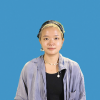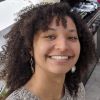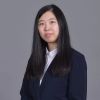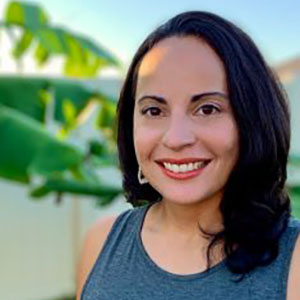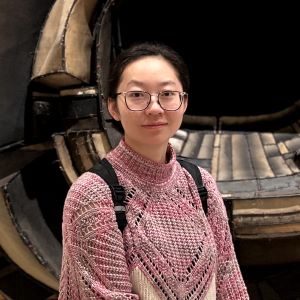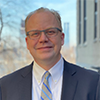Speakers are listed in alphabetical order
Individual presentation
Co-designing Embodiments in Art and Computing Education
New York University
Shuang Cai
Tisch School of the Arts
Bio: Shuang is a multimedia artist, creative technologist, and curator born in Beijing and currently based in NYC. Shuang holds a Graduate’s degree from NYU Interactive Telecommunication Program and a dual Bachelor’s Degree from Bard College Computer Science and Studio Art program. Their research is in embodiments practice in education environments and creative hardware development. Their art practice is often concerned with to philosophy, logic, interactions, and interpersonal dynamics. Currently, they are writing and curating for LATITUDE Gallery New York and NARS Foundation.
Additional team members: Francisco Castro, Steinhardt School of Culture, Education, and Human Development, Vera Liqian Zhong, Tisch School of the Arts, and Kayla DesPortes, Steinhardt School of Culture, Education, and Human Development
Abstract: In this talk, we delve into the innovative intersection of dance and computing education through a series of co-design workshops aimed at educators in STEM and dance. Focusing on using danceON creative coding environment, our workshops explored the dynamic relationship between body movement, coding concepts, and interdisciplinary collaboration. Through a lens of Distributed Cognition, we investigated how participating educators navigated the integration of their expertise, physical embodiment, and digital representations to co-create creative dance artifacts and foster deeper learning experiences. Join us as we uncover the insights gleaned from these workshops and their implications for enhancing interdisciplinary education.
Short Talk
Increasing Student Engagement and Cultural Understanding of Latin America with a Digital Escape Room
Stacey DiLiberto
Department of Philosophy, University of Central Florida
Bio: Dr. Stacey DiLiberto is a Lecturer of Humanities and Cultural Studies at the University of Central Florida where she teaches courses in postcolonial theory and multicultural and environmental humanities. Focusing specifically on Latin American, Latinx, and multiethnic literatures, including the African diaspora, Stacey is also interested in the interdisciplinary connections between science and the humanities. Stacey is the recipient of the 2023 Chuck D. Dziuban Award in Excellence in Online Teaching, designing interactive, student-centered activities and game-based assignments for her online students.
Abstract: Learning skills in cultural literacy provides students an opportunity to competently function in our current, ever-changing global society. A digital escape room was developed as an asynchronous activity for an online Latin American Humanities course to increase engagement for students during the COVID-19 pandemic, a time of turmoil and upheaval. Gamification provides opportunities for students to immerse themselves in a cultural narrative as well as give them a sense of place, without having to travel to a location. This presentation will share the pedagogical, accessibility, logistical, and technological considerations needed for creating such an activity.
Individual presentation
Bring the Hidden Story to Virtual Space – The Virtual Reality Museum of Banjo
Yuning Gao
Steinhardt School of Culture, Education, and Human Development, New York University
Bio: Yuning Gao is a learning designer who developed a virtual reality museum to tell the hidden story of banjo and slavery history. She is also passionate about research in educational technology and the museum education field.
Abstract: This presentation introduces the Virtual Reality (VR) Museum of Banjo, a project born from the intersection of learning technology, experience design, and a passion for museums. The presenter, a graduate student, will introduce the inspiration, design process, and theoretical underpinnings behind the creation of this immersive experience. By leveraging VR technology, the museum aims to shed light on the often-overlooked story of the banjo’s connection to slavery history. Through meticulous research and ideation, virtual reality emerged as the ideal medium for storytelling, offering unparalleled opportunities for engagement and accessibility. The presenter details the selection process of content, emphasizing the importance of historical accuracy and diverse perspectives obtained through interviews and information gathering. Furthermore, the application of learning and design theories enriches the museum’s narrative, fostering critical thinking and empathy among visitors. The presentation also addresses the importance of accessibility in VR projects and outlines strategies for inclusive design. Attendees will gain insights into the decision-making process behind creating a VR museum, learn about the integration of educational technology, and explore strategies for ensuring accessibility and inclusivity. Additionally, the presenter highlights the significance of community engagement and collaboration in sustaining the impact of virtual experiences. Ultimately, the VR Museum of Banjo serves as a platform to amplify diverse voices and reclaim the narrative of African American heritage. By sharing this journey, the presenter hopes to inspire others to embark on similar ventures in leveraging technology for education and storytelling.
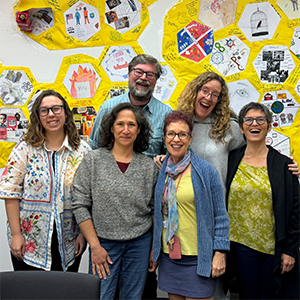 Workshop
Workshop
Doing Team-Teaching and Interdisciplinarity at CUNY: The ISP Model
Richard Haw
Department of Interdisciplinary Studies / ISP, John Jay College of Criminal Justice, CUNY
Bio: Richard Haw is the author of The Brooklyn Bridge: A Cultural History; Art of the Brooklyn Bridge: A Visual History; Engineering America: The Life and Times of John A Roebling; and Leon Bibel: Forgotten Artist of the New Deal (forthcoming). He is a Professor in the Department of Interdisciplinary Studies at John Jay College of Criminal Justice.
Abstract: The Thematic Studies Program—since renamed the Interdisciplinary Studies Program (ISP)—was established at CUNY’s John Jay College of Criminal Justice in 1972. It was designed to bring students together to study “a single theme of both contemporary relevance and historical importance to be taught by a multidisciplinary team” of faculty. The grant envisioned an integrated curriculum that would foster reading, writing, speaking, listening, and analytic skills across the disciplines in the humanities and social sciences. The courses were experimental and taught by two (and sometimes three or four) faculty from different academic disciplines. Faculty would collaborate to develop new courses each semester. A stable of permanent faculty members ensured continuity and provided mentoring, while other faculty members from around the college were able to rotate through on an ad hoc basis. Remarkably, this model—in at least most of it particulars—has held for over fifty years. This workshop will introduce participants to ISP’s process of course creation, preparation, and pedagogy and provide some hands-on experience in designing interdisciplinary team-taught courses. Participants will work in groups to develop a common theme and then collaboratively brainstorm and structure an interdisciplinary syllabus around that theme. Together they will identify effective collaborative strategies, design a set of interdisciplinary assignments and in-class exercises, and assess and analyze different ways of approaching interdisciplinarity in the classroom. Time permitting, we also hope to include a discussion of the strengths and weaknesses of collaborative, interdisciplinary education.
Panel
The Green Team Initiative New York City College of Technology
Understanding the Environmental and Economic Connections to Our Food Systems
Sean Macdonald
Social Sciences
Bio: Sean MacDonald is a professor of Economics at the New York City College of Technology and earned her PhD in Economics from the New School for Social Research. She serves as the director of City Tech’s Data Analytics in Economics bachelor’s degree program and as coordinator of a new academic minor in Environmental Studies. Her research has focused on sustainable economic development, housing markets, and interdisciplinary teaching and learning. Her current research involves studying the effects of infusing data collection and analysis assignments on students’ quantitative reasoning skills and in exploring the impact on their interest in and attitudes about data analysis.
Abstract: Where our food comes from matters. For decades, U.S. agricultural policy has prioritized generous subsidies for industrial agriculture and resource-and energy-intensive foods. Large scale animal agriculture consumes significant amounts of energy, water and land, while monocropping of commodity crops such as soy and corn, used in animal feed and in processed foods, rely on nitrogen-based fertilizers containing harmful chemicals which have depleted soil nutrients over time. While these systems have made products such as beef, pork, chicken, and many processed foods much more affordable to consumers, they have contributed significantly to deforestation, water scarcity, and the production of climate-warming gasses such as methane
and carbon dioxide. At the same time, less than 1 percent of agricultural subsidies go toward the output of fruits and vegetables, contributing to their relatively higher cost and lower availability to consumers, especially those in underserved communities. Over time, this has contributed to affordability and convenience replacing healthful food choices. Among the outcomes have been rising rates of preventable illnesses such as diabetes and heart disease, along with the significant direct and indirect economic costs of treatment. Support for local community-focused alternatives, including community-supported agriculture (CSA’s) and urban agriculture, can empower local communities by expanding access to healthy options in underserved communities in food deserts and food ‘swamps,’ while promoting awareness of the health and economic benefits of increasing healthy food choices. These initiatives can also play a key role in revitalizing local economies.
Building Community Through Sustainable Vegetable Pick-Up Location: A Strategy for Students’ Involvement, Education, and Social Responsibility
Robert Walljasper
Hospitality Management
Bio: Robert Walljasper is a professor of Hospitality Management at the New York City College of Technology. He earned a Master of Science from Ramapo State College of New Jersey and holds multiple professional certifications. He is a professional chef with a distinguished career that evolved into teaching. Creative works exhibited locally and internationally, and research into quality ingredients, local, seasonal, professionalism, and teamwork have been his research focus. He has also developed opportunities for students to do undergraduate research in creative works, place-based scholarship through professional exhibitions, and peer mentoring.
Abstract: This service-learning project and research investigates establishment of a weekly vegetable stand and pop-up greenmarket tasting in Brooklyn developing students’ sense of community, culinary education, and ethical advocacy. The public and students’ interests in local, sustainable, and seasonal ingredients make hosting Community Supported Agriculture (CSA) share pick-up site a distinctive learning opportunity with great benefits. Through participation, students increase their engagement with community and teamwork skills by volunteering at the vegetable stand and greenmarket. The students develop potential tools or strategies for promoting thoughtful eating and reflect on application. Through research and application in preparation for volunteering, students explore, discover and practice utilization of New York ingredients, building knowledge and expertise. Producers, businesses, and consumers have a variety of options from selection choice, costs, and possible impacts. To support increasing advocacy, the project studies possible benefits of regional options, healthy choices, and environmental factors to advance sense of social responsibility and potential influencer role. This project seeks to build students’ engagement in the community, knowledge of sustainable ingredients, and potential impacts both locally and in the hospitality industry. By collecting and analyzing data from surveys, market price lists, What’s Available charts, and observations, we hope to identify the best practices and strategies for boosting consumption of locally grown vegetables. The outcomes from this project will broaden understanding for students, teachers, industry leaders, and consumers who want to incorporate local vegetables into their communities.
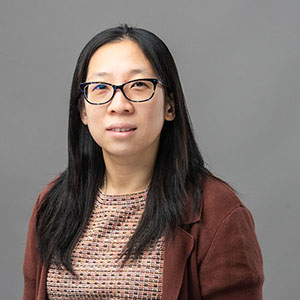 Individual presentation
Individual presentation
Putting Classroom Theory into Practical Application through Simulation
Wenhsing Yang
Department of Nursing, New York City College of Technology
Bio: Wenhsing Yang is a lecturer in the Nursing Department of New York City College of Technology. She started her position last year and enjoys teaching at the college.
Abstract: City Tech currently has more than 287 students enrolled in the nursing program (AAS). In healthcare education, there is a revolution taking place in the form of implementing high-fidelity simulation laboratories to bridge the gap between theory and nursing practice. Due to changes in the Department of Education (DOE)’s regulation (January 2023), simulation can be used to replace 1/3 of clinical hours due to the challenge of patients’ availability and instructors’ variability. (DOE, 2023). High-fidelity simulation offers more realism and provides students with more advanced cues necessary to perform hands-on scenarios with diverse populations. Additionally, simulation is considered a form of real experience, learning where learners are tasked to solve complex health problems in a safe and controlled environment (University of Washington, 2024). Students are required to use critical thinking to apply nursing theory to clinical reasoning skills and to provide patient care during the simulation. This includes teamwork, communication, assessment, and providing nursing intervention to the patients (NCSBN, 2024). After the simulation, a “debriefing session” occurs to discuss the development of insight, improve future performance, and promote the integration of learning into practice. This process involves, resolving the gap in knowledge, skills, attitudes, and communication related to individuals, teams, and systems. Simulation is an important pedagogical learning method for nursing students. Since medical-surgical nursing is a critical component of healthcare, nurses must possess a diverse skill set and knowledge to provide nursing care across various settings with different ethnicities. There is a need to implement simulation-based learning into medical-surgical nursing. This proposal aims to share with my City Tech colleagues how to develop and implement simulation as an educational methodology.


